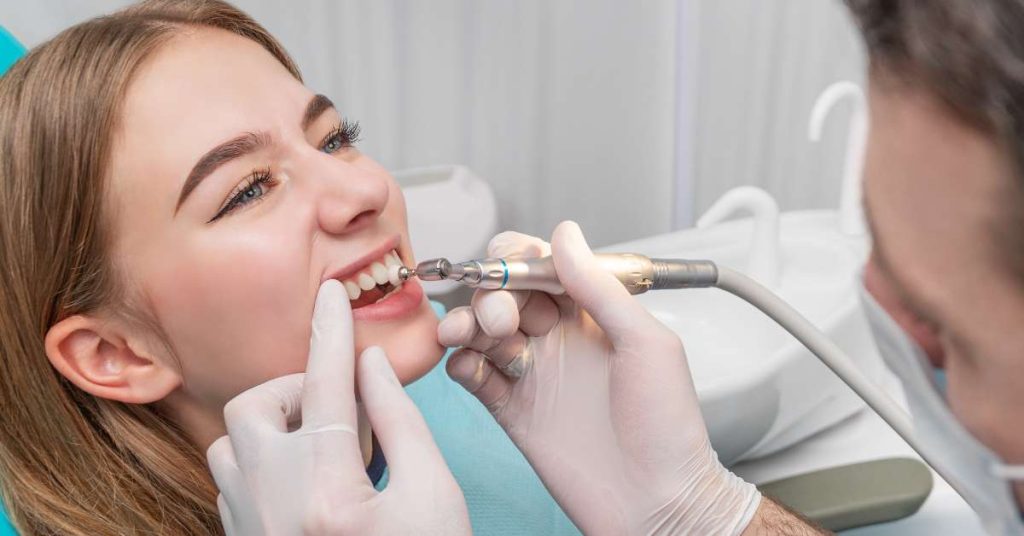AI Summary: This article explains when a dentist’s deep cleaning is necessary, what it involves, and how it helps treat gum disease. Learn the signs that indicate the need for deep cleaning, what the process entails, and its benefits, risks, and alternatives.
If your gums bleed when brushing or your dentist mentions “deep pockets,” you may need a deep dental cleaning, also known as scaling and root planing. Unlike routine cleanings, this procedure removes plaque and tartar below the gumline to stop gum disease from progressing.
At Digital Aesthetic Dentistry, we use advanced technology to provide comfortable deep cleanings that protect your smile and overall health.
Key Takeaways
-
Deep dental cleaning removes plaque and tartar below the gumline.
-
It’s essential for treating and preventing gum disease.
-
Signs you may need it include bleeding gums, bad breath, or deep pockets.
-
The process involves scaling and root planing, often over two visits.
-
Risks are minimal and include temporary sensitivity or mild discomfort.
-
Alternatives like localized antibiotic therapy exist for mild cases.
-
Consistent oral hygiene and routine cleanings help prevent future issues.
Understanding Deep Dental Cleaning
Deep dental cleaning plays a crucial role in maintaining oral health, particularly when gum disease is present. This procedure, known as scaling and root planing, goes beyond the standard approach to address deeper issues caused by plaque and tartar buildup. Let’s explore what deep dental cleaning entails and how it compares to routine dental cleaning.
What is Deep Dental Cleaning?
Deep cleaning is a non-surgical dental treatment for gum disease. It involves cleaning below the gumline to remove harmful buildup that causes inflammation, infection, and bone loss.
Scaling and Root Planing Explained
-
Scaling: Removes plaque and tartar from beneath the gumline
-
Root planing: Smooths the root surfaces so bacteria can’t easily reattach
-
Local anesthesia: Used to minimize discomfort
-
Follow-up care: Includes good oral hygiene and possibly antibiotics
This process usually takes two visits.
Deep Cleaning vs. Routine Cleaning: What’s the Difference?
| Type of Cleaning | Targets | Purpose |
|---|---|---|
| Routine Cleaning | Above the gumline | Prevents cavities and gingivitis |
| Deep Cleaning | Below the gumline (roots and pockets) | Treats gum disease and inflammation |
Routine cleanings are preventive. Deep cleanings are therapeutic—they treat existing problems, not just prevent them.

Signs You May Need a Deep Cleaning
Knowing when deep cleaning is necessary helps you take action before problems worsen. Key indicators include:
Common Signs of Gum Disease
-
Bleeding gums while brushing or flossing
-
Receding gums exposing more tooth surface
-
Persistent bad breath
-
Loose or shifting teeth
Deep Pockets Detected During Exams
Dentists measure the space between your teeth and gums. A depth over 4mm indicates gum disease and may require deep cleaning.
Tartar Buildup
Only professional tools can remove hardened plaque (tartar), especially beneath the gumline.
What Are The Benefits of Deep Cleaning Your Teeth?
Deep cleaning plays a vital role in preventing serious dental issues.
Oral Health Benefits
-
Stops gum disease from progressing
-
Reduces inflammation and bleeding
-
Supports the healing of gum tissue
-
Prevents tooth loss
-
Improves breath and oral hygiene
Are There Any Risks to Deep Cleaning?
While deep cleaning is safe and effective, it’s important to know potential side effects.
Possible Side Effects
-
Mild pain or gum sensitivity for a few days
-
Slight swelling or bleeding post-treatment
-
Temporary tooth sensitivity to hot or cold
-
Rare risk of infection (especially with immune compromise)
-
Very rare risk of nerve damage
✅ Choosing an experienced dental provider helps reduce risks and ensure proper healing.

Are There Alternatives to Deep Dental Cleaning?
If your gum disease is not severe, less invasive options may work.
Alternative Treatments
-
Scaling with antibiotic therapy: Targets bacteria without root planing
-
Ongoing homecare: Brush twice daily, floss daily, use antibacterial mouthwash
-
Routine cleanings: Every 6 months to maintain gum health
At Digital Aesthetic Dentistry, we evaluate your condition to determine the best solution for your needs.
What Happens After a Deep Cleaning?
Your post-treatment care is just as important as the procedure.
Aftercare Tips
-
Follow your dentist’s hygiene instructions
-
Use a soft-bristle toothbrush and sensitive toothpaste
-
Avoid hard or sticky foods for a few days
-
Take prescribed antibiotics if recommended
-
Schedule follow-up cleanings as advised

Recap: When Is Deep Dental Cleaning Necessary?
-
Deep cleaning treats gum disease by removing plaque and tartar under the gums
-
It’s essential when you have bleeding gums, tartar buildup, or deep pockets
-
The process includes scaling, root planing, and proper follow-up care
-
Risks are minimal and manageable with professional care
-
Alternatives exist, but are only effective for mild cases
Ready to Take Control of Your Gum Health?
If you’re experiencing signs of gum disease or haven’t had a deep cleaning before, it’s time to act. At Digital Aesthetic Dentistry, your trusted dentist Baymeadows Jacksonville FL, we offer gentle and effective treatments tailored to your comfort and needs.
🦷 Book your dental consultation today to protect your smile for years to come.
FAQ: Deep Dental Cleaning
Q: What is the purpose of deep dental cleaning?
A: To remove plaque and tartar below the gumline, treat gum disease, and promote healthy gums.
Q: How do I know if I need a deep cleaning?
A: You may need it if you have bleeding gums, loose teeth, bad breath, or deep gum pockets.
Q: Is deep cleaning painful?
A: Local anesthesia is used to reduce discomfort. Some sensitivity may occur for a few days.
Q: How long does the procedure take?
A: Typically two appointments, each lasting 1–2 hours, depending on the severity.
Q: Are there risks involved?
A: Mild discomfort, slight infection risk, and rare nerve damage are possible, but uncommon.
Q: What should I do after deep cleaning?
A: Follow your dentist’s instructions, maintain oral hygiene, and schedule follow-ups.
Q: Are there alternatives to deep cleaning?
A: Yes, such as scaling with antibiotics or increased home care, but they may not be as effective in advanced cases.




